المساحيق منخفضة السبائك دورًا حاسمًا في مختلف الصناعات، بدءًا من صناعة السيارات وحتى صناعة الطيران. وتعدد استخداماتها، إلى جانب خصائصها الفريدة، يجعلها لا غنى عنها في تصنيع المكونات عالية الأداء. في هذا الدليل الشامل، سوف نستكشف كل ما تحتاج إلى معرفته عن المساحيق منخفضة السبائك - بدءًا من تركيبها إلى تطبيقاتها وخصائصها وغير ذلك. سواء كنت خبيرًا في الصناعة أو قارئًا فضوليًا، تم تصميم هذه المقالة لتوفير معرفة متعمقة مع الحفاظ على الأمور محادثة وجذابة.
نظرة عامة على المسحوق منخفض السبائك
المساحيق منخفضة السبائك عبارة عن مساحيق معدنية مصممة هندسيًا تحتوي على نسبة صغيرة من عناصر السبائك مثل الكروم أو الموليبدينوم أو النيكل. صُممت هذه المساحيق خصيصًا لتحسين الخواص الميكانيكية ومقاومة التآكل وصلابة المعدن الأساسي. تُستخدم عادةً في تعدين المساحيق لتصنيع الأجزاء التي تتطلب قوة عالية ومتانة وأبعاد دقيقة.
تحظى المساحيق منخفضة السبائك بشعبية في التطبيقات التي تتطلب مواد ذات خواص ميكانيكية فائقة مقارنة بالمعادن النقية أو المواد عالية السبائك. ويضمن الاختيار الدقيق لعناصر السبائك في المساحيق منخفضة السبائك قدرة المنتج النهائي على تحمل الظروف القاسية، مثل درجات الحرارة العالية والبيئات المسببة للتآكل والأحمال الثقيلة.

التفاصيل الرئيسية لمسحوق السبائك المنخفضة
| المعلمة | الوصف |
|---|---|
| التركيب | معدن قاعدي مع عناصر إشابة 1-5% مثل Mo، Cr، Ni |
| الخصائص | متانة عالية، ومقاومة للتآكل، وصلابة محسنة، وصلابة |
| التطبيقات الشائعة | مكونات السيارات، وقطع غيار الطائرات، والأدوات، والآلات الثقيلة |
| عملية التصنيع | التذرية والتلبيد والكبس المتساوي الحرارة (HIP) |
| عناصر السبائك النموذجية | الكروم، والموليبدينوم، والموليبدينوم، والنيكل، والمنغنيز، والفاناديوم، والتيتانيوم |
| مزايا | خصائص ميكانيكية محسّنة وفعالة من حيث التكلفة ومتعددة الاستخدامات |
تركيبة مسحوق السبائك المنخفضة
يعد فهم تركيب مساحيق السبائك المنخفضة أمرًا بالغ الأهمية لاختيار المادة المناسبة لتطبيق معين. عادة ما يكون المعدن الأساسي في هذه المساحيق هو الحديد، ولكن يمكن أيضًا استخدام معادن أخرى مثل النيكل والتيتانيوم. تؤثر عناصر السبائك، المضافة بكميات صغيرة، بشكل كبير على خصائص المسحوق.
الجدول: عناصر السبائك الشائعة في المساحيق منخفضة السبائك
| عنصر السبائك | التركيز النموذجي (%) | الغرض |
|---|---|---|
| الكروم (Cr) | 1-3% | يعزز مقاومة التآكل والصلابة |
| الموليبدينوم (Mo) | 0.5-2% | يحسن القوة في درجات الحرارة العالية ومقاومة التآكل |
| النيكل (ني) | 1-5% | يزيد من الصلابة والليونة |
| الفاناديوم (V) | 0.1-1% | يعزز صقل الحبيبات ومقاومة التآكل |
| التيتانيوم (Ti) | 0.1-0.5% | يحسن القوة ومقاومة التآكل |
| المنجنيز (Mn) | 0.5-2% | يزيد من الصلابة ومقاومة التآكل |
لماذا هذه العناصر؟
- الكروم (Cr): يشتهر الكروم بمقاومته الممتازة للتآكل، وهو عنصر أساسي في مساحيق السبائك المنخفضة المصممة للبيئات القاسية. كما أنه يعزز الصلابة، مما يجعل المنتج النهائي أكثر متانة.
- الموليبدينوم (Mo): هذا العنصر ضروري للتطبيقات التي تتطلب قوة عالية في درجات الحرارة المرتفعة. يعزز الموليبدينوم من مقاومة التآكل، مما يضمن طول عمر المكونات مثل التروس والأعمدة.
- النيكل (ني): يعمل النيكل على تحسين صلابة وليونة المساحيق منخفضة السبائك، مما يجعلها مناسبة للأجزاء التي تتعرض لإجهاد أو تشوه كبير.
- الفاناديوم (V): الفاناديوم ضروري لصقل الحبيبات مما يحسن الخواص الميكانيكية الكلية للمادة، بما في ذلك مقاومة التآكل.
- التيتانيوم (Ti): تعمل إضافة التيتانيوم إلى مساحيق السبائك المنخفضة على تعزيز القوة مع الحفاظ على مقاومة التآكل، مما يجعله مثاليًا للتطبيقات الفضائية.
خصائص مسحوق السبائك المنخفضة
يتم تصميم خصائص المساحيق منخفضة السبائك من خلال الاختيار الدقيق لعناصر السبائك والتحكم الدقيق في عملية التصنيع. وتحدد هذه الخصائص مدى ملاءمة المسحوق لمختلف التطبيقات.
الجدول: خصائص المسحوق منخفض السبائك
| الخصائص | الوصف |
|---|---|
| قوة عالية | تم تصميم المساحيق منخفضة السبائك لإنتاج أجزاء ذات قوة فائقة. |
| مقاومة التآكل | تعزيز مقاومة التآكل بسبب وجود عناصر مثل Mo وCr. |
| الصلابة | تسمح المتانة المحسّنة بأداء أفضل في التطبيقات الصعبة. |
| مقاومة التآكل | توفر عناصر السبائك مثل Cr وTi مقاومة ممتازة للتآكل. |
| ثبات الأبعاد | تحافظ الأجزاء المصنوعة من المساحيق منخفضة السبائك على أبعادها حتى تحت الضغط. |
| مقاومة التعب والإجهاد | مقاومة ممتازة للإجهاد تجعل هذه المساحيق مثالية للتحميل الدوري. |
سبب أهمية هذه الخصائص
- قوة عالية: القوة هي الاعتبار الأساسي في التطبيقات التي تتعرض فيها الأجزاء لأحمال ثقيلة أو ضغوط عالية. يتم تصميم المساحيق منخفضة السبائك لإنتاج مكونات يمكنها تحمل هذه الظروف دون أن تتعطل.
- مقاومة التآكل: في صناعات مثل السيارات والأدوات، غالبًا ما تتعرض الأجزاء للاحتكاك والتآكل. تضمن مقاومة التآكل للمساحيق منخفضة السبائك أن تدوم المكونات لفترة أطول، مما يقلل من الحاجة إلى الاستبدال المتكرر.
- الصلابة: المتانة هي قدرة المادة على امتصاص الطاقة والتشوه دون أن تنكسر. وتعد هذه الخاصية ضرورية للأجزاء التي يجب أن تتحمل الصدمات أو الإجهاد دون أن تنكسر.
- مقاومة التآكل: يمكن أن يقلل التآكل بشكل كبير من العمر الافتراضي للمكون. توفر المساحيق منخفضة السبائك التي تحتوي على عناصر مثل الكروم مقاومة فائقة للتآكل، مما يجعلها مثالية للاستخدام في البيئات القاسية.
- ثبات الأبعاد: يعد الحفاظ على الأبعاد الدقيقة أمرًا بالغ الأهمية في صناعات مثل صناعة الطيران والسيارات، حيث يمكن أن تؤدي حتى الانحرافات الطفيفة إلى مشاكل كبيرة. تضمن المساحيق منخفضة السبائك بقاء الأجزاء مستقرة في ظل ظروف مختلفة.
- مقاومة التعب والإجهاد: تعتبر مقاومة التعب أمرًا حيويًا للمكونات التي تخضع لدورات تحميل متكررة. المساحيق منخفضة السبائك مصممة لتحمل هذه الظروف دون الخضوع لفشل التعب.


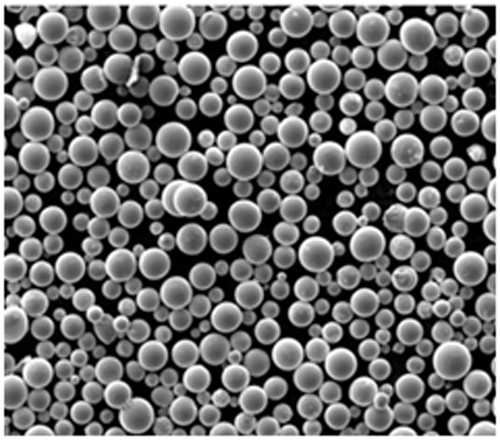
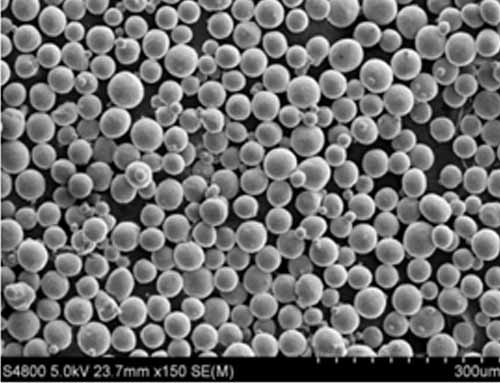
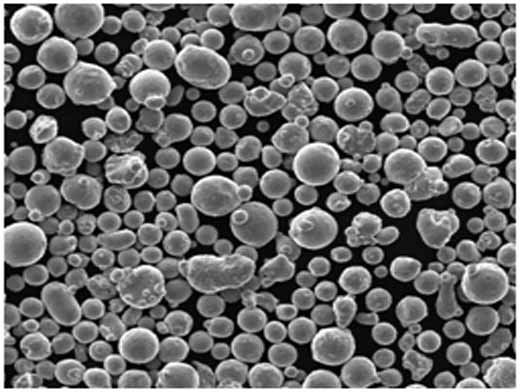
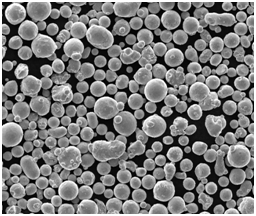
تطبيقات المسحوق منخفض السبائك
المساحيق منخفضة السبائك متعددة الاستخدامات بشكل لا يصدق، حيث يتم استخدامها في مجموعة واسعة من الصناعات. وقدرتها على تعزيز الخواص الميكانيكية تجعلها مثالية للتطبيقات التي تتطلب القوة والمتانة والدقة.
الجدول: التطبيقات الشائعة لمسحوق السبائك المنخفضة
| الصناعة | طلب | المزايا |
|---|---|---|
| السيارات | التروس، والمحامل، وأعمدة الكامات، وقضبان التوصيل | متانة عالية، ومقاومة للتآكل، ومقاومة للإجهاد |
| الفضاء | شفرات التوربينات، ومكونات المحرك، والأجزاء الهيكلية | خفيف الوزن وعالي القوة ومقاوم للتآكل |
| الأدوات | أدوات القطع والقوالب والقوالب والقوالب | مقاومة التآكل، والمتانة، والدقة |
| الآلات الثقيلة | علب التروس، والمكونات الهيدروليكية | القوة، والمتانة، ومقاومة التآكل |
| النفط والغاز | لقم الثقب والصمامات وخطوط الأنابيب | قوة عالية ومقاومة عالية للتآكل والتآكل |
| الطبية | الغرسات والأدوات الجراحية | التوافق الحيوي، والمتانة، ومقاومة التآكل |
| الدفاع | المركبات المدرعة وأنظمة الأسلحة | المتانة، ومقاومة التآكل، والقوة |
| الإلكترونيات | الموصلات، العلب، العلب | ثبات الأبعاد، ومقاومة التآكل |
| الطاقة | مكونات توربينات الرياح، وأجزاء المفاعل النووي | المتانة، ومقاومة التعب، ومقاومة التآكل |
| البحرية | المراوح، ومكونات المحرك | مقاومة التآكل، ومقاومة التآكل، والمتانة |
أمثلة من العالم الحقيقي
- السيارات: في صناعة السيارات، تُستخدم المساحيق منخفضة السبائك في تصنيع المكونات الحرجة مثل التروس وأعمدة الكامات. تتطلب هذه الأجزاء قوة عالية ومقاومة عالية للتآكل لتحمل ضغوط تشغيل المحرك.
- الفضاء: غالبًا ما تُصنع شفرات التوربينات في المحركات النفاثة من مساحيق منخفضة السبائك نظرًا لقدرتها على الحفاظ على قوتها وثباتها في درجات الحرارة العالية، مما يضمن التشغيل الآمن والفعال.
- الطبية: يجب أن تكون الأدوات الجراحية والغرسات قوية ومتوافقة حيوياً. وتُستخدم المساحيق منخفضة السبائك مع التيتانيوم بشكل شائع لتلبية هذه المتطلبات، مما يوفر أجهزة طبية متينة وآمنة.
مزايا المسحوق منخفض السبائك
تقدم المساحيق منخفضة السبائك مزيجًا فريدًا من الخصائص التي تجعلها مفيدة للغاية في مختلف التطبيقات. لنتعمق في الفوائد المحددة التي تميز هذه المساحيق عن غيرها من المواد الأخرى.
الجدول: مزايا المسحوق منخفض السبائك
| الميزة | الوصف |
|---|---|
| الفعالية من حيث التكلفة | تكون المساحيق منخفضة السبائك عمومًا أقل تكلفة من بدائل السبائك العالية. |
| تعدد الاستخدامات | مناسبة لمجموعة واسعة من التطبيقات في مختلف الصناعات. |
| خواص ميكانيكية محسّنة | تحسين القوة ومقاومة التآكل والمتانة مقارنةً بالمعادن النقية. |
| قابلية التخصيص | يمكن تعديل التركيبة لتلبية متطلبات الاستخدام المحددة. |
| دقة الأبعاد | مثالية لتصنيع القِطع ذات الأبعاد الدقيقة والتفاوتات الضيقة. |
| المقاومة البيئية | توفر مقاومة ممتازة للتآكل والحرارة والتآكل في البيئات القاسية. |
سبب أهمية هذه المزايا
- الفعالية من حيث التكلفة: توفر المساحيق منخفضة السبائك حلاً فعالاً من حيث التكلفة لتصنيع مكونات عالية الأداء. وبالمقارنة مع المساحيق عالية السبائك، فإنها توفر مزايا مماثلة بسعر أقل، مما يجعلها خيارًا جذابًا للصناعات التي تراعي التكلفة.
- تعدد الاستخدامات: تُظهر القدرة على استخدام المساحيق منخفضة السبائك في مجموعة متنوعة من الصناعات - من السيارات إلى الفضاء الجوي - تعدد استخداماتها. وهذا يجعلها مادة مفضلة للمصنعين الذين يتطلعون إلى تحسين الأداء في مختلف التطبيقات.
- خواص ميكانيكية محسّنة: تعمل إضافة عناصر السبائك على تعزيز الخواص الميكانيكية للمعدن الأساسي بشكل كبير. وينتج عن ذلك مكونات أقوى وأكثر متانة يمكنها تحمل الظروف الصعبة.
- قابلية التخصيص: تتمثل إحدى المزايا الرئيسية للمساحيق منخفضة السبائك في القدرة على تكييف تركيبها لتلبية متطلبات محددة. وهذا يسمح للمصنعين بتحسين المواد لتطبيقات معينة، سواء كان ذلك لتحسين مقاومة التآكل أو قوة أعلى أو مقاومة أفضل للتآكل.
- دقة الأبعاد: المساحيق منخفضة السبائك مثالية لإنتاج أجزاء ذات تفاوتات ضيقة وأبعاد دقيقة. وهذا مهم بشكل خاص في صناعات مثل صناعة الطيران والسيارات، حيث يمكن أن تؤدي حتى الانحرافات الطفيفة إلى مشاكل كبيرة.
- المقاومة البيئية: في التطبيقات التي تتعرض فيها المكونات لبيئات قاسية، مثل درجات الحرارة المرتفعة أو المواد المسببة للتآكل، توفر المساحيق منخفضة السبائك مقاومة فائقة، مما يضمن عمر خدمة أطول وتكاليف صيانة أقل.
مساوئ وقيود المسحوق منخفض السبائك
على الرغم من أن المساحيق منخفضة السبائك تقدم العديد من الفوائد، إلا أنها تأتي أيضًا مع بعض القيود التي يجب أخذها في الاعتبار عند اختيار المواد لتطبيقات محددة.
الجدول: مساوئ وقيود المسحوق منخفض السبائك
| العيب | الوصف |
|---|---|
| مجموعة عناصر السبائك المحدودة | النسبة المئوية لعناصر السبائك محدودة، مما قد يحد من الخصائص. |
| غير مناسب للبيئات القاسية | قد تكون هناك حاجة إلى مساحيق السبائك العالية للظروف الأكثر قسوة. |
| تعقيد المعالجة | يتطلب تحكم دقيق أثناء التصنيع لتحقيق الخصائص المطلوبة. |
| إمكانات الهشاشة | يمكن أن تصبح بعض المساحيق منخفضة السبائك هشة إذا لم تتم معالجتها بشكل صحيح. |
| مقاومة التآكل المحدودة | وعلى الرغم من تحسنها، إلا أن مقاومة التآكل قد لا تضاهي مقاومة الفولاذ المقاوم للصدأ. |
سبب أهمية هذه القيود
- مجموعة عناصر السبائك المحدودة: يقتصر نطاق عناصر السبائك في مساحيق السبائك المنخفضة على حوالي 1-5%. وهذا يمكن أن يحد من قدرة المادة على تحقيق خصائص معينة، خاصةً عند مقارنتها بمساحيق السبائك العالية التي يمكن أن تحتوي على نسب مئوية أعلى من عناصر السبائك.
- غير مناسب للبيئات القاسية: بالنسبة للتطبيقات في الظروف القاسية للغاية، مثل البيئات ذات درجات الحرارة العالية أو الأجواء شديدة التآكل، قد تكون المساحيق عالية السبائك خيارًا أفضل. قد لا توفر مساحيق السبائك المنخفضة الحماية أو الأداء اللازمين في هذه السيناريوهات.
- تعقيد المعالجة: تتطلب عملية تصنيع المساحيق منخفضة السبائك تحكمًا دقيقًا لتحقيق الخصائص المطلوبة. يمكن أن يؤدي أي انحراف في العملية إلى منتج لا يفي بالمواصفات المطلوبة، مما يؤدي إلى أعطال محتملة أو انخفاض الأداء.
- إمكانات الهشاشة: إذا لم تتم معالجتها بشكل صحيح، يمكن أن تصبح مساحيق السبائك المنخفضة هشة، مما يجعلها عرضة للتشقق أو الانكسار تحت الضغط. وهذا أمر مثير للقلق بشكل خاص في التطبيقات التي تكون فيها المتانة أمرًا بالغ الأهمية.
- مقاومة التآكل المحدودة: على الرغم من أن المساحيق منخفضة السبائك توفر مقاومة محسنة للتآكل مقارنةً بالمعادن النقية، إلا أنها قد تظل أقل من الحماية التي توفرها مواد مثل الفولاذ المقاوم للصدأ، خاصةً في البيئات شديدة التآكل.
نماذج المساحيق المعدنية المحددة
تأتي المساحيق منخفضة السبائك في نماذج مختلفة، كل منها مصمم لتلبية متطلبات محددة. فيما يلي عشرة أمثلة لنماذج المساحيق منخفضة السبائك الشائعة، إلى جانب أوصافها وتطبيقاتها.
الجدول: نماذج المساحيق منخفضة السبائك الشائعة
| الطراز | التركيب | الخصائص | التطبيقات |
|---|---|---|---|
| فيمو10 | Fe + 10% Mo | قوة عالية، مقاومة ممتازة للتآكل | تروس السيارات، والمكونات الفضائية |
| فيني5 | الحديد + 5% ني | زيادة الصلابة والليونة | الأجزاء الهيكلية، والموصلات |
| FeCr3 | الحديد + 3% Cr | مقاومة محسنة للتآكل، صلابة جيدة | المكونات والأدوات البحرية |
| فيف1 | Fe + 1% V | تحسين مقاومة التآكل، وصقل الحبيبات | أدوات القطع، الأجزاء عالية الإجهاد |
| فيمن2 | الحديد + 2% المنغنيز | صلابة أفضل، ومقاومة أفضل للتآكل | المحامل، والأعمدة، والتروس |
| FeMo2Ni4 | الحديد + 2% Mo + 4% Ni | قوة وصلابة متوازنة | الأجزاء الهيكلية للفضاء، والسيارات |
| FeCrMoNi | Fe + Cr + Mo + Ni (نسب قابلة للتخصيص) | خصائص متعددة الاستخدامات، مصممة خصيصاً لتطبيقات محددة | العديد من الصناعات |
| FeTi0.5 | Fe + 0.5% Ti | قوة معززة ومقاومة جيدة للتآكل | مثبتات الفضاء الجوي، الغرسات الطبية |
| FeMnCrNiV | Fe + Mn + Cr + Ni + V (مزيج مخصص) | مقاومة فائقة للتآكل والمتانة ومقاومة التآكل | مكونات عالية الأداء |
| FeMoCrNi2V1 | الحديد + المنيوم + الكروم + النيكل + الفوسفور | قوة عالية، ومقاومة ممتازة للتآكل والتآكل | النفط والغاز، والمكونات الفضائية |
الأوصاف التفصيلية
- فيمو10: يتميز هذا الطراز بالحديد مع الموليبدينوم 10%، مما يوفر قوة عالية ومقاومة ممتازة للتآكل. يُستخدم عادةً في صناعات السيارات والفضاء للمكونات مثل التروس والأجزاء الهيكلية التي تحتاج إلى تحمل الإجهاد والتآكل العالي.
- فيني5: يتألف من نيكل 5%، ويوفر FeNi5 من النيكل، ويوفر FeNi5 صلابة وليونة متزايدة، مما يجعله مثاليًا للأجزاء الهيكلية والموصلات التي تتطلب المتانة والمرونة.
- FeCr3: مع الكروم 3%، يوفر هذا الموديل مقاومة محسنة للتآكل وصلابة جيدة. وهو مناسب تمامًا للمكونات والأدوات البحرية التي تحتاج إلى تحمل البيئات المسببة للتآكل.
- فيف1: يتميز بالفاناديوم 1%، حيث يحسن FeV1 من مقاومة التآكل ويعزز صقل الحبيبات مما يجعله خيارًا شائعًا لأدوات القطع والقطع التي تتعرض لضغط عالٍ.
- فيمن2: يشتمل هذا الطراز على المنجنيز 2%، الذي يعزز الصلابة ومقاومة التآكل. وغالبًا ما يستخدم في المحامل والأعمدة والتروس حيث تكون هذه الخصائص ضرورية.
- FeMo2Ni4: مزيج متوازن من الموليبدينوم 2% والنيكل 4%، يوفر هذا الطراز توازنًا جيدًا بين القوة والمتانة، مما يجعله مناسبًا للأجزاء الهيكلية الفضائية وتطبيقات السيارات.
- FeCrMoNi: يسمح هذا النموذج القابل للتخصيص بخصائص مخصصة من خلال تعديل نسب الكروم والموليبدينوم والنيكل. ويُستخدم في العديد من الصناعات التي تتطلب خصائص محددة.
- FeTi0.5: مع التيتانيوم 0.5%، يوفر هذا الطراز قوة معززة ومقاومة جيدة للتآكل، مما يجعله مثاليًا لمثبتات الطيران والزراعات الطبية.
- FeMnCrNiV: مزيج مخصص من المنجنيز، والكروم، والنيكل، والنيكل، والفاناديوم، يوفر هذا الطراز مقاومة فائقة للتآكل، والمتانة، ومقاومة التآكل، ومناسبة للمكونات عالية الأداء.
- FeMoCrNi2V1: يوفر هذا الطراز الذي يجمع بين الموليبدينوم والكروم والنيكل والفاناديوم قوة عالية ومقاومة ممتازة للتآكل والتآكل، مما يجعله مثاليًا للتطبيقات الصعبة في قطاعي النفط والغاز والفضاء.
المواصفات والمقاسات والمعايير
تتوفر المساحيق منخفضة السبائك بأحجام ودرجات مختلفة، مع الالتزام بمعايير الصناعة لضمان الجودة والاتساق. وتعتبر مواصفات هذه المساحيق حاسمة لتحديد مدى ملاءمتها لتطبيقات محددة.
الجدول: مواصفات، وأحجام، ومعايير المساحيق منخفضة السبائك
| المواصفات | الوصف |
|---|---|
| حجم الجسيمات | يتراوح من 10 إلى 150 ميكرون، حسب الاستخدام |
| النقاء | عادةً >99%، مع رقابة صارمة على الشوائب |
| الصف | تختلف حسب الاستخدام، بما في ذلك الدرجات القياسية مثل ASTM F75 |
| الكثافة | عادةً ما تكون 7.8 جم/سم مكعب للمساحيق ذات الأساس الحديدي |
| قابلية التدفق | يُقاس باستخدام مقياس التدفق هول (Hall)، عادةً 30-50 ثانية/50 جم |
| المعايير | astm b213, astm b962, ISO 4497, ISO 3923 |
| التعبئة والتغليف | متوفر في أكياس سعة 25 كجم أو براميل أو عبوات مخصصة |
لماذا تعتبر المواصفات مهمة
- حجم الجسيمات: يعد حجم جزيئات المسحوق أمرًا بالغ الأهمية لتحديد كيفية تصرف المسحوق أثناء المعالجة. وعادة ما تستخدم الجسيمات الأصغر حجمًا للتطبيقات التي تتطلب تفاصيل أدق ودقة أكبر، في حين أن الجسيمات الأكبر حجمًا قد تكون مفضلة للمكونات الأكبر حجمًا.
- النقاء: النقاوة العالية ضرورية لضمان أداء المسحوق كما هو متوقع، خاصةً في التطبيقات الحرجة مثل الفضاء الجوي أو الأجهزة الطبية. يمكن أن تؤدي الشوائب إلى عيوب أو أعطال في المنتج النهائي.
- الصف: تحدد درجة المسحوق ملاءمته لتطبيقات محددة. على سبيل المثال، ASTM F75 هو معيار شائع لسبائك الكوبالت والكروم والموليبدينوم المستخدمة في الغرسات الطبية.
- الكثافة: تؤثر كثافة المسحوق على سلوك التعبئة والكثافة النهائية للمنتج الملبد. الكثافة المتسقة مهمة لتحقيق خصائص موحدة في الجزء النهائي.
- قابلية التدفق: قابلية التدفق هي مقياس لمدى سهولة تدفق المسحوق عبر القواديس والمعدات الأخرى. وتعد قابلية التدفق الجيدة أمرًا حاسمًا للتجهيز المتسق والمنتجات النهائية عالية الجودة.
- المعايير: يضمن الالتزام بمعايير الصناعة تلبية المسحوق لمتطلبات الجودة والأداء اللازمة. وهذا مهم بشكل خاص في الصناعات المنظمة مثل صناعة الطيران والأجهزة الطبية.
- التعبئة والتغليف: التغليف المناسب مهم لحماية المسحوق أثناء النقل والتخزين. كما يضمن تسليم المسحوق في حالة جاهزة للاستخدام.
تفاصيل الموردين والأسعار
اختيار المورد المناسب لـ مسحوق سبيكة منخفضة ضروري لضمان الجودة والاتساق والموثوقية. فيما يلي نظرة على بعض الموردين الرائدين و
نظرة عامة على اتجاهات التسعير.
الجدول: تفاصيل الموردين والأسعار
| المورد | الموقع | الموديلات المتوفرة | السعر (لكل كجم) | الحد الأدنى لكمية الطلب |
|---|---|---|---|---|
| هوغاناس إيه بي | السويد | FeMo10، FeCr3، FeV1 | $25-$40 | 100 كجم |
| تعدين المساحيق GKN | المملكة المتحدة | FeNi5، FeMn2, FeMoCrNi، FeMoCrNi | $30-$50 | 200 كجم |
| تكنولوجيا النجار | الولايات المتحدة الأمريكية | FeMo2Ni4، FeTi0.5 | $35-$55 | 50 كجم |
| ساندفيك إيه بي | السويد | FeMnCrNiV، FeMoCrNi2V1 | $40-$60 | 100 كجم |
| معادن البودرة ATI | الولايات المتحدة الأمريكية | FeCrMoNi، FeV1 | $30-$45 | 150 كجم |
| كيناميتال | الولايات المتحدة الأمريكية | FeCr3, FeMo10 | $35-$50 | 100 كجم |
فهم التسعير
- تباين الأسعار: يمكن أن يختلف سعر مساحيق السبائك المنخفضة بشكل كبير بناءً على عوامل مثل التركيب والنقاء وموقع المورد. عادةً ما تؤدي النسب المئوية الأعلى من عناصر السبائك مثل الموليبدينوم أو النيكل إلى زيادة السعر.
- الحد الأدنى لكمية الطلب (موك): موك هو عامل مهم بالنسبة للشركات، وخاصة العمليات الأصغر حجماً. وعادةً ما يطلب الموردون طلبات أكبر لتبرير تكلفة الإنتاج والشحن، ولكن بعض الموردين يقدمون مرونة أكبر مع انخفاض موك.
- الاعتبارات الجغرافية: يمكن أن يؤثر موقع المورد أيضًا على الأسعار بسبب تكاليف الشحن ورسوم الاستيراد/التصدير واللوائح المحلية. على سبيل المثال، قد تكون أسعار الموردين الأوروبيين أعلى بسبب اللوائح البيئية الأكثر صرامة.
مقارنة إيجابيات وسلبيات خيارات المسحوق منخفض السبائك
عند اختيار مسحوق منخفض السبائك، من الضروري الموازنة بين إيجابيات وسلبيات الطرز المختلفة. إليك مقارنة لمساعدتك في اتخاذ قرار مستنير.
الجدول: مقارنة بين خيارات المسحوق منخفض السبائك
| الطراز | الإيجابيات | السلبيات |
|---|---|---|
| فيمو10 | قوة عالية، مقاومة ممتازة للتآكل | ارتفاع التكلفة بسبب محتوى الموليبدينوم |
| فيني5 | زيادة الصلابة والليونة | مقاومة أقل للتآكل مقارنةً بطرازات FeCr |
| FeCr3 | مقاومة جيدة للتآكل والصلابة | صلابة محدودة، قد تتطلب سبائك إضافية |
| فيف1 | تحسين مقاومة التآكل، وصقل الحبيبات | يمكن أن تكون هشة إذا لم تتم معالجتها بشكل صحيح |
| فيمن2 | صلابة معززة وفعالة من حيث التكلفة | قوة أقل مقارنة بطراز FeMo أو FeNi |
| FeMo2Ni4 | قوة وصلابة متوازنة | أسعار متوسطة المدى، قد لا توفر مقاومة شديدة للتآكل |
| FeCrMoNi | خصائص قابلة للتخصيص، تطبيق متعدد الاستخدامات | معالجة معقدة، تكلفة أعلى |
| FeTi0.5 | قوة معززة ومقاومة جيدة للتآكل | تقتصر على التطبيقات التي تتطلب صلابة أقل |
| FeMnCrNiV | مقاومة فائقة للتآكل والتآكل | ارتفاع التكلفة والمعالجة المعقدة |
| FeMoCrNi2V1 | قوة عالية، ومقاومة ممتازة للتآكل والتآكل | المعالجة الأكثر تكلفة وتعقيدًا |
ما النموذج المناسب لك؟
- إذا كنت بحاجة إلى قوة عالية ومقاومة للتآكلضع في اعتبارك فيمو10. ومع ذلك، كن مستعداً لتكلفة أعلى قليلاً بسبب محتوى الموليبدينوم.
- للاستخدامات التي تتطلب صلابة وليونة, فيني5 خيارًا قويًا، على الرغم من أنه قد لا يوفر نفس مستوى مقاومة التآكل الذي توفره الموديلات التي تحتوي على نسبة أعلى من الكروم.
- هل تبحث عن مقاومة التآكل؟ FeCr3 خيارًا ممتازًا، على الرغم من أنك قد تحتاج إلى التفكير في إضافة سبيكة إضافية إذا كنت تحتاج إلى صلابة معززة.
- إذا كانت مقاومة التآكل هي اهتمامك الأساسي, فيف1 يوفر أداءً أفضل، ولكن احذر من الهشاشة إذا لم تتم معالجتها بشكل صحيح.
- للحصول على حل فعال من حيث التكلفة مع صلابة جيدة, فيمن2 يستحق التفكير فيه، على الرغم من أنه قد لا يضاهي قوة الموديلات الأغلى ثمناً.
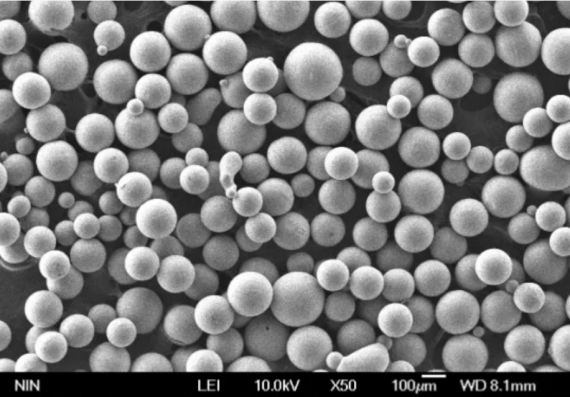
التعليمات
| سؤال | الإجابة |
|---|---|
| ما هو المسحوق منخفض السبائك المستخدم في ماذا يستخدم المسحوق منخفض السبائك؟ | تُستخدم المساحيق منخفضة السبائك في صناعات مثل السيارات والفضاء والأدوات لتصنيع مكونات عالية القوة والمتانة. |
| كيف يتم صنع المسحوق منخفض السبائك؟ | تُصنع المساحيق منخفضة السبائك عادةً من خلال الانحلال، يليها التلبيد أو الكبس المتساوي الحرارة (HIP). |
| ما هي فوائد استخدام المسحوق منخفض السبائك؟ | تشمل المزايا الخواص الميكانيكية المحسّنة والفعالية من حيث التكلفة وتعدد الاستخدامات في مختلف التطبيقات. |
| ما هي حدود المسحوق منخفض السبائك؟ | تشمل القيود مجموعة محدودة من عناصر السبائك، والهشاشة المحتملة، والملاءمة المحدودة للبيئات القاسية. |
| كيف أختار المسحوق المناسب من السبائك المنخفضة؟ | ضع في اعتبارك عوامل مثل القوة المطلوبة، ومقاومة التآكل، ومقاومة التآكل، والتكلفة عند اختيار مسحوق منخفض السبائك. |
| هل يمكن تخصيص المساحيق منخفضة السبائك؟ | نعم، يمكن تصميم المساحيق منخفضة السبائك من خلال تعديل تركيبة عناصر السبائك لتلبية متطلبات محددة. |
| هل المساحيق ذات السبائك المنخفضة باهظة الثمن؟ | تختلف الأسعار بناءً على التركيب والمورد، ولكن مساحيق السبائك المنخفضة تكون عمومًا أقل تكلفة من بدائل السبائك العالية. |
| ما الصناعات التي تستخدم المساحيق منخفضة السبائك؟ | تشمل الصناعات الرئيسية السيارات والفضاء والنفط والغاز والأدوات والأجهزة الطبية. |
| هل المسحوق منخفض السبائك مناسب للبيئات القاسية؟ | في حين أنها توفر مقاومة محسنة للتآكل والتآكل، قد لا تكون المساحيق منخفضة السبائك مناسبة للبيئات القاسية للغاية، حيث قد تكون المساحيق عالية السبائك مطلوبة. |
| كيف يتم ضمان جودة المسحوق منخفض السبائك؟ | يتم ضمان الجودة من خلال الالتزام بمعايير الصناعة مثل ASTM وISO، بالإضافة إلى الرقابة الصارمة على النقاء وحجم الجسيمات. |
خاتمة
المساحيق منخفضة السبائك هي مادة لا غنى عنها في التصنيع الحديث، حيث تقدم مزيجًا فريدًا من الخصائص التي تجعلها مناسبة لمجموعة واسعة من التطبيقات. وتوفر هذه المساحيق القوة والمتانة والدقة المطلوبة في الصناعات عالية الأداء في الوقت الحالي، بدءًا من قطع غيار السيارات وحتى مكونات الطيران.
من خلال فهم تركيبة المساحيق منخفضة السبائك وخصائصها وتطبيقاتها، بالإضافة إلى مزايا وقيود النماذج المختلفة، يمكنك اتخاذ قرارات مستنيرة بشأن المواد الأنسب لاحتياجاتك الخاصة. وسواء كنت تتطلع إلى تحسين الأداء أو تقليل التكاليف أو ضمان طول العمر، تقدم مساحيق السبائك المنخفضة حلاً متعدد الاستخدامات يمكن تصميمه خصيصًا لتلبية متطلباتك.
تذكر أن تضع في اعتبارك جميع العوامل، بما في ذلك التركيب والتكلفة وموثوقية المورد والاحتياجات الخاصة بالتطبيق، عند اختيار المسحوق المناسب من السبائك المنخفضة لمشروعك. مع الاختيار الصحيح، يمكنك تحقيق نتائج فائقة وتحقيق النجاح في مساعي التصنيع الخاصة بك.

